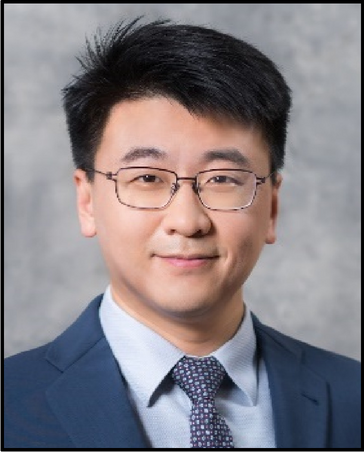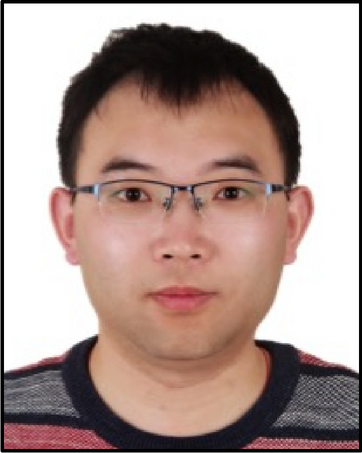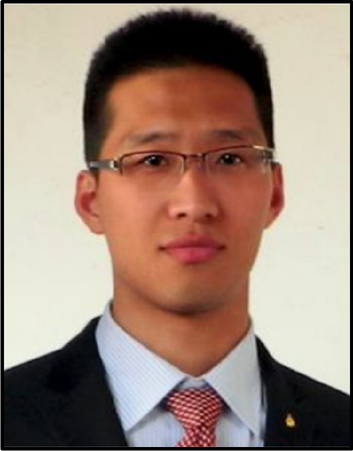2 The 2023 AAPPS-APCTP C. N. Yang Award by Rajdeep Singh Rawat (Chair of the C. N. Yang Award Committee)
The 2023 AAPPS-APCTP C. N. Yang Awards were presented to three outstanding and prospective young scholars, Danfeng LI (City University of Hong Kong), Li LI (Chinese Academy of Science), and Liyong ZHANG (Beijing Normal University). A total of 26 nominations were received from nominees of eight different nationalities, with representation in nine different sessions of the Asia Pacific Physics Conference (APPC-15) (see Table 1). Out of a total of 26 nominations, 21 nominations were from AAPPS member societies and AAPPS divisions while the remaining 6 were individual nominations. Compared to 2022, 2023 saw a drop in overall nomination numbers (from 31 to 26), with a drop in nominations from AAPPS member societies and AAPPS divisions (from 27 to 21), while the individual nominations increased (from 4 to 6). However, all nominations, being highly selective from AAPPS member societies, AAPPS divisions, and from high profile eligible experts, were of excellent quality, which made the selection process highly challenging.
The C. N. Yang Award was established to honor and encourage young researchers with prominent research achievements and to promote the next generation’s leading scholars in physics in the Asia-Pacific region. This award was presented during the Asia Pacific Physics Conference (APPC), which has been held approximately every three years. Notably, starting in 2019, the Association of Asia Pacific Physical Societies (AAPPS) and the Asia Pacific Center for Theoretical Physics (APCTP) jointly established the AAPPS-APCTP Chen-Ning Yang Award (C. N. Yang Award) to make it an annual event. The C. N. Yang Award Committee consists of members from the AAPPS Council, AAPPS Divisions, and renowned scholars recommended by APCTP. For 2023, the awards were presented at a special award ceremony held in Gyeongju, Korea on Monday, November 6, 2023.
The C. N. Yang Award selection process is a multi-step, highly vigorous, and challenging process, requiring careful and detailed evaluations at each step. The originality of the candidates’ works, the novelty and impact of their research, and their likely prospects were some of the important areas of consideration. The citations and the briefings for the C. N. Yang 2023 awardees are listed below.
Danfeng Li, City University of Hong Kong

“For his discovery and synthesis of the first nickel oxide superconductor.”
Dr. Danfeng Li obtained his BEng from Zhejiang University and MPhil from The Hong Kong Polytechnic University. He received his PhD in 2016 from the Department of Quantum Matter Physics at the University of Geneva and then joined Stanford University as a Swiss National Science Foundation postdoctoral fellow. He has been an assistant professor at the City University of Hong Kong since November 2020. Dr. Li’s main research interests span across condensed-matter physics and materials science, focusing on atomic-scale fabrication of oxide heterostructures and nanomembranes, kinetic-based synthesis of unconventional quantum materials, low-dimensional superconductivity, and oxide interfaces for emergent states. In 2019, Dr. Danfeng Li and Professor Harold Hwang at Stanford University announced a groundbreaking discovery of a thin-film nickel oxide (nickelate) superconductor Nd0.8Sr0.2NiO2 (Nature 2019, 572, 624), which shattered the boundaries of conventional wisdom and ignited a new era of research on nickelate superconductivity. This discovery marked the end of a long and arduous journey in search of a new class of high-temperature superconducting materials, offering an important vehicle to test theories of high-temperature superconductivity. For Dr. Li’s pioneering contribution to the field of “nickelate superconductors,” he was recently named by MIT Technology Review in the article, “35 Innovators Under 35 (China)”.
Li Li, Chinese Academy of Science

“For his research on theoretical aspects of black holes, gauge/gravity duality, and cosmology. His works not only enabled a better understanding of the nature of gravity and black holes, but also shed new light on the properties of quantum matter and complex systems.”
Dr. Li Li is currently a full professor at the Institute of Theoretical Physics, Chinese Academy of Sciences (CAS), Beijing. He received his BSc (2009) from the China University of Mining and Technology and his PhD (2014) from the Institute of Theoretical Physics, CAS, Beijing. Before joining the Institute of Theoretical Physics, CAS, Beijing as an associate professor in 2019, he did postdoctoral research work at the University of Crete, Greece, and at Lehigh University, USA. He is currently leading the group “Integrated Quantum Optics Lab” at the Physics School of Peking University. Dr. Li’s research interests focus on black hole physics, gauge/gravity duality, and cosmology. His research has resulted in 55 high-quality peer-reviewed papers, published in journals including Science Advances, Physical Review Letters, and the Journal of High Energy Physics. The citations of his publications are over 2000 with an h-index of 27. He is an experimental nuclear astrophysicist, who has been engaged in experimental research on nuclear celestial bodies for many years. His main research focus is the measurement of key nuclear reactions in the evolution of celestial bodies. For example, recently he and his collaborators established the black hole no Cauchy horizon theorem [JHEP 03, 263, 2021], and set strict restrictions on the number of black hole horizons based on energy conditions [Class. Quant. Grav. 39, no.3, 035005, 2022]. The work revealed that matter not only promotes the formation of an event horizon but also prevents the appearance of multiple horizons inside black holes. Dr. Li’s other important research works include the prediction of novel behavior of amorphous solids [Sci Adv 2022] and uncovering the existence of universal mechanisms in the out-of-equilibrium behavior of strongly coupled fluids [PRL 2022].
Liyong Zhang, Beijing Normal University

“For his pioneering research of heavy element synthesis in the first stars via nuclear reaction in a deep underground laboratory.”
Dr. Liyong Zhang received his BSc in applied physics in 2008 from Hebei University of Science and Technology, China and his PhD in 2013 in nuclear astrophysics from the Institute of Modern Physics, Chinese Academy of Sciences, Lanzhou, China. He did his postdoctoral research at the School of Physics and Astronomy, University of Edinburgh, UK, and then joined Beijing Normal University, China as an associate professor in May 2019. He has been a full professor at Beijing Normal University since July 2022.
Dr. Zhang is a brilliant young researcher who has made significant contributions to the frontier field of nuclear astrophysics through his work done at the Jinping Underground Nuclear Astrophysics (JUNA) project for many years, making substantial contributions to our understanding of nuclear astrophysics through direct reaction measurements down to the Gamow window. His remarkable achievements in the JUNA project include his work on the 19F(p, γ)20Ne experiment [Nature 610, 656, 2022]. Through this project, he and his collaborators discovered a new resonance at 225 keV and incorporated this result into Pop III stellar evolution calculations. The outcome of their work revealed that 40Ca can be produced in reasonable amounts during the static hydrogen burning stage, as opposed to the explosive burning stage, which was previously predicted in models of massive stellar evolution. Another noteworthy research result of Dr. Zhang’s work is his contribution to the 19F(p, αγ)16O experiment, wherein he and his team succeeded in providing, to date, the most precise reaction rate [PRL 127, 152702, 2021]. The experiment measured the reaction cross-section for the first time down to the Gamow window energy.
Table 1 The nationalities and the sessions of the 2023 C. N. Yang Award nominees
| Nationality | No. of candidates |
| Japan | 8 |
| Beijing | 5 |
| India | 3 |
| Hong Kong | 3 |
| Taipei | 3 |
| Korea | 2 |
| Australia | 1 |
| Nepal | 1 |
| Total | 26 |
| Sessions (in APPC15-2022) | No. of candidates |
| E. Condensed Matter Physics | 9 |
| B. Astrophysics, Cosmology, and Gravitation | 5 |
| G. Nuclear Physics | 3 |
| H. Optics and Quantum Electronics | 3 |
| I. Particles and Fields | 2 |
| A. Applied Physics | 1 |
| K. Plasma Physics | 1 |
| L. Quantum Information | 1 |
| N. Statistical Physics | 1 |
| Total | 26 |
References
-
A White Paper from the Office of National Higher Education Science Research and Innovation Policy Council, Thailand S&T Strategy. https://www.nxpo.or.th/th/frontier-research-3/
-
N. Ratsuntia, A. Songmunnak, N. Ritjoho, T. Sanghangthum and C. Kobdej, In Study of imaging system in proton computed tomography with data acquisition from a monolithic active pixel sensor, Siam Physics Congress 2022: Carbon Neutrality (SPC 2022). J. Phys. Conf. Ser., IOP Publishing. 2431(2023), 012093 (2022). https://doi.org/10.1088/1742-6596/2431/1/012093
-
A. Wisitsorasak, A. Shimizu, S. Sangaroon, K. Ogawa, B. Chatthong, S. Suksaengpanomrung, A. Tamman, N. Poolyarat, M. Isobe, Feasibility study of a Heavy Ion Beam Probe for the Thailand Tokamak-1. Fusion Eng. Des. 198, 114068 (2024)
-
P. Poramapijitwat, P. Thana, P. Sukum, Y. Liangdeng, C. Kuensaen, ...D. Boonyawan, Selective Cytotoxicity of Lung Cancer Cells—A549 and H1299—Induced by Ringer’s Lactate Solution Activated by a Non‑thermal Air Plasma Jet Device, Nightingale®. Plasma Chem. Plasma Process. 43, 805–830 (2023)
-
The Brainpower Congress, Program Management Unit for Human Resources & Institutional Development, Research and Innovation (PMU-B), Dec 18-20, 2023 (2023)
-
M. S. Bahramy, O. J. Clark, B.-J. Yang, J. Feng, L. Bawden, J. M. Riley, I. Marković, F. Mazzola, V. Sunko, D. Biswas, S. P. Cooil, M. Jorge, J. W. Wells, M. Leandersson, T. Balasubramanian, J. Fujii, I. Vobornik, J. E. Rault, T. K. Kim, M. Hoesch, K. Okawa, M. Asakawa, T. Sasagawa, T. Eknapakul, W. Meevasana & P. D. C. King, Ubiquitous formation of bulk Dirac cones and topological surface states from a single orbital manifold in transition-metal dichalcogenides. Nat. Mater. 17(1), 21–27 (2018)
-
G. Gitgeatpong, Y. Zhao, P. Piyawongwatthana, Y. Qiu, L. W. Harriger, N. P. Butch, T. J. Sato, and K. Matan, Nonreciprocal Magnons and Symmetry-Breaking in the Noncentrosymmetric Antiferromagnet. Phys. Rev. Lett. 119, 047201 (2017)
-
C. Thongbai, N. Khangrang, W. Jaikla, P. Kitisri, K. Kongmali, M.W. Rhodes, S. Rimjaem, J. Saisut, S. Supasin, S. Suphakul, Development of an Undulator Magnetic Field Measurement System for the Free-Electron Laser Facility at Chiang-Mai University. Physica Status Solidi (A) Applications and Materials Science. 220(10), 2200398 (2023)
-
W. Passatorntaschakorn, W. Khampa, W. Musikpan, C. Bhoomanee, A. Ngamjarurojana, S. Rimjaem, Atcharawon Gardchareona,c, C. Rodwihok, H. S. Kim, N. Khambunkoed, R. Supruangnet, H. Nakajima, L. Srathongsian, P. Kanjanaboos, A. Intaniwet, A. Kaewprajak, P. Kumnorkaew, F. Goubard, P. Ruankham, D. Wongratanaphisan, A novel carbon electrode for up-scaling flexible perovskite solar cells. Appl. Mater. Today. 34, 101895 (2023)
-
For additional details, please visit: https://www.thep-center.org
Author information
Authors and Affiliations
Consortia
Contributions
The authors read and approved the final manuscript.
Ethics declarations
Competing interests
The authors declare that they have no competing interests.
Additional information
Publisher’s Note
Springer Nature remains neutral with regard to jurisdictional claims in published maps and institutional affiliations.

